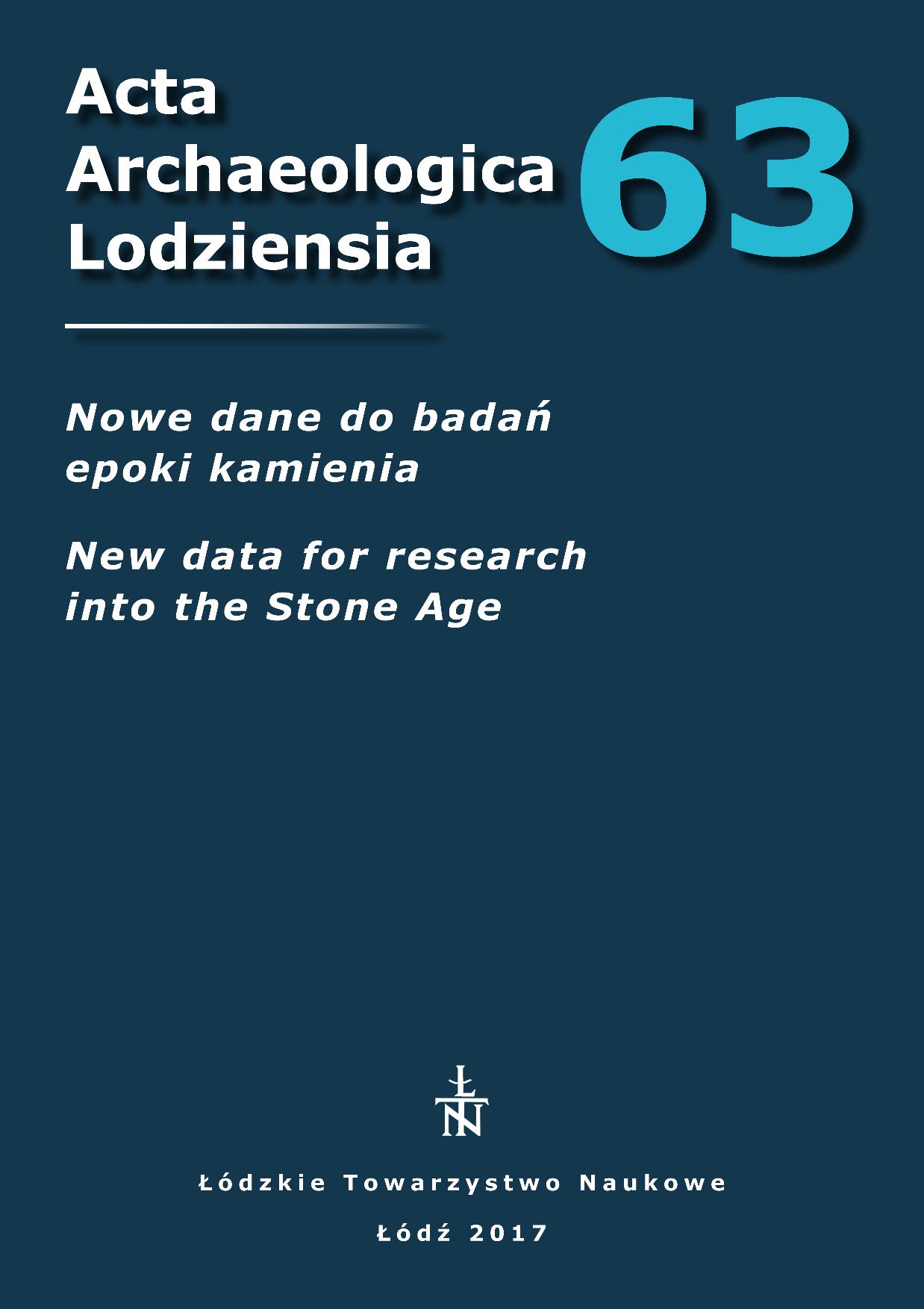Spatial, functional and comparative analysis of a Late Palaeolithic Swiderian culture settlement at Kraków-Bieżanów site 15
Przestrzenna, funkcjonalna i porównawcza analiza obozowiska kultury świderskiej z Krakowa Bieżanowa stanowisko 15
Author(s): Katarzyna Pyżewicz, Kamil Serwatka, Damian StefańskiSubject(s): History, Archaeology, Cultural history
Published by: Łódzkie Towarzystwo Naukowe
Keywords: Paleolit schyłkowy ,Late Palaeolithic; Swiderian culture; Swiderian point; use-wear analysis; tip cross-sectional area analysis; tip angle analysis; geometric-morphometric outline shape analysis
Summary/Abstract: This article is a study devoted to the spatial organization of a settlement of the Swiderian culture at Kraków-Bieżanów site 15. In the course of wide-scale rescue excavations (1999-2008), numerous lithic materials associated with this culture were discovered. They come from archaeological features such as the small kshemenitsa (KB-15/1 – feature 1) or spots of material clustering (features 2 and 3), they were collected as single finds. The spatialanalysis of the basic tool groups, i.e. Swiderian points, endscrapers and burins, showed that their distribution around archaeological objects wasnot accidental and points to diversity in functional space organization at the site. The aim of this investigation was to find the reason for the nature of this differentiation. For this purpose, a part of the available material has been studied by means of use-wear analysis. Although the state of preservation of lithics greatly reduced the possibility of carrying out functional analysis, a number of valuable observations were made. Particularly interesting were results concerning Swiderian points and endscrapers. In addition, Swiderian points, as the most intriguing category of typological tool related to the Swiderian culture, were analyzed by morphometric methods (tip cross-sectional area analysis, tip angle analysis, geometrics morphometrics) which were subjected to corroborated use-wear studies. The results obtained indicated the distictive areas (points, endscrapers and burins zones) and shed light on their functional interpretation.
Journal: Acta Archaeologica Lodziensia
- Issue Year: 2017
- Issue No: 63
- Page Range: 7-27
- Page Count: 21
- Language: English

